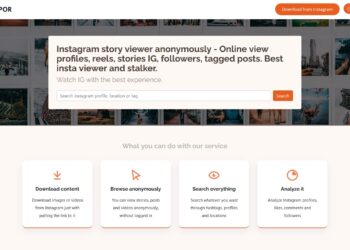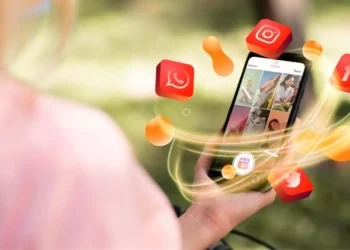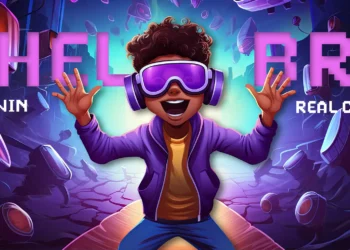Everybody will remember the beginning of 2020 with panic related to the spread of a previously unknown disease called “coronavirus COVID-19.” Many companies had to change the rhythm of work seriously, bear significant losses, rebuild established business processes. Most people begin to ask not only the questions, like “how to protect myself from COVID-19”, but “how to secure my devices,” “what is the best Windows 10 antivirus,” and “is Avast mobile good”. People want to know how to make the protection of their lives comprehensive, from digital to mental and physical health.
Still, in this article, we will explain how companies known for their IT development have been able to offer solutions to combat the pandemic.
Drones In the Fight For Quarantine Regime
The epicenter of the new virus spread was the Chinese city of Wuhan in Hubei Province. A month after the first cases, the authorities decided to quarantine the population of the city temporarily. The life of 8.9 million people was almost frozen: suspended public transport, closed airports and railway stations, all entrances and exits.
It would seem that the problem has been solved, but the modern world cannot end all ties at once. Test kits were sent to Wuhan to identify new cases, but further analysis required them to be referred to medical clinics outside the quarantine zone. The company MicroMultiCopter from Shenzhen, one of the leaders of the R&D-development market, took over the case: its engineers offered to use drones for this purpose. The implementation did not require long approvals – everything was prepared in a matter of days, and soon contactless air delivery gained full force.
Robots Against Epidemic
China is one of the main developers and manufacturers of such innovative systems. We will tell you about one of them. This system was designed for remote control of the citizens’ body temperature.
Probably a lot of you have seen specially appointed people at the airport do it when checking passengers. Robots in medical clinics have gone further – they have replaced staff (completely or during rest), help in collecting tests, monitor the correctness of tests, notify, etc. And, of course, with their help, such necessary operations as disinfection of premises in clinics and other medical institutions of Wuhan are carried out.
AI Catches the Diseased
The main barrier for the virus spread was a new system of remote detection of the infected, introduced in almost two months.
The problem was that many people in China, not fully aware of the danger of the epidemic, continued to lead a familiar way of life. They did not limit their communication, movement, and violate self-isolation. It became clear: it would not be possible to solve the problem in traditional ways. Opening hospitals and calling on citizens to seek help with the first symptoms will not help, and the epidemic will continue to spread.
Therefore, as early as March, all street police officers in Chengdu and Shenzhen received new smart helmets developed by Kuang-Chi. The model of a remote system of infrared diagnostics of pedestrians, called Smart Helmet N901, allows detecting citizens with the increased body temperature at a distance of up to five meters by a contactless method. Its range is much higher, but with 5 m, it is guaranteed 100% accuracy).
When Smart Helmet N901 records a person with a body temperature above 37, 3 ° in the crowd, the artificial intelligence system is loaded: it sends an audio signal and displays the personal data of the citizen.
Coronavirus Close Contact Mobile App Helps People to Stay Calm
Having realized that the situation in the country is becoming dangerous, the Chinese government appealed to the residents to provide maximum assistance to the authorities and doctors in detecting and localizing new hotbeds of infection at the earliest stages. The quickly created mobile application Coronavirus Close Contact was launched into public access as early as February 8. To participate in the national monitoring program, everyone could register by specifying their mobile phone number or ID number. Basic data became information about persons diagnosed with COVID-19: the system automatically restored routes of all previous movements of the diseased.
What does each registered member end up with? The system automatically checks whether they contact any of those who have been diagnosed with COVID-19. If confirmed, it issues a recommendation to stay at home. The app also provides contacts of the nearest medical center where qualified assistance is available.
The government does not disclose the sources of such information, but it is clear that the system uses data collected through facial recognition in public places, video surveillance, and other monitoring systems.
Xerox Can Make the World a Better Place
Whatever the achievements in the fight against the spread of COVID-19, the whole world is waiting first of all for the main thing – a vaccine against this dangerous virus.
On March 18, the Guardian reported the results of clinical trials in hospitals in Wuhan and Shenzhen. 340 patients with a confirmed diagnosis of COVID-19 began to receive Avigan, developed by Toyama Chemical – a subsidiary of Fujifilm, a Japanese camera manufacturer, and with the acquisition in November 2019 of Xerox – the official vendor of the popular brand MER. Thus, the proposed vaccine removed the virus from the body of patients in four days, and complete lung recovery was recorded in 91% of patients.
This is how suddenly Xerox, known for its innovations throughout IT, actively developing its own methodology of document management today, now has every chance to become a star in the fight against a dangerous COVID-19.
AI Predicts Risks of Epidemic Spread
There are no detailed studies on how the work of the sanitary service in the fight against COVID-19 is organized, but some information has yet emerged.
As the founder of Canadian medical company Kamran Khan told, the intelligent BlueDot they created, uses AI capabilities, including natural language processing tools and machine learning, allowing them to identify potential patients and predict the spread of infection. The system can view up to 100,000 online publications a day in 65 languages. Control is carried out not only on COVID-19, but also on more than 100 other infectious diseases. Reports are generated from this information and transmitted to the particular agencies for detailed evaluation.
It is noted that the system simultaneously collects large arrays of accompanying information. For example, data on the meteorological situation in different regions, on passenger transport, help to predict more accurately the risks of the pandemic, and the rate of the disease spread.
















